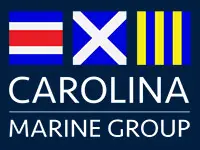Finding The H.L. Hunley
The H.L. Hunley was the first successful combat submarine in world history. After she completed her mission to sink the USS Housatonic during the Civil War, she dove beneath the surface and mysteriously disappeared, lost at sea for over 130 years. Then, in 1995, the National Underwater and Marine Agency (NUMA), finally found the legendary Hunley after a century of searching by various adventurers.
The Hunley Commission and Friends of the Hunley, a non-profit group, joined with the United States Navy in an effort that resulted in the Hunley’s safe recovery on August 8, 2000. The Hunley has undergone extensive preservation work at the Warren Lasch Conservation Center, a high-tech lab, whose purpose is to uncover the mystery of her disappearance and to preserve the myriad of artifacts found onboard to teach us about life during the Civil War era. Archaeologists are hoping to use the clues they have found to trace the final moments of the Hunley and her crew.

Paul Mardikian, uses a microscope to examine a pocket watch that belonged to the sub’s commanding officer, Lt. George Dixon
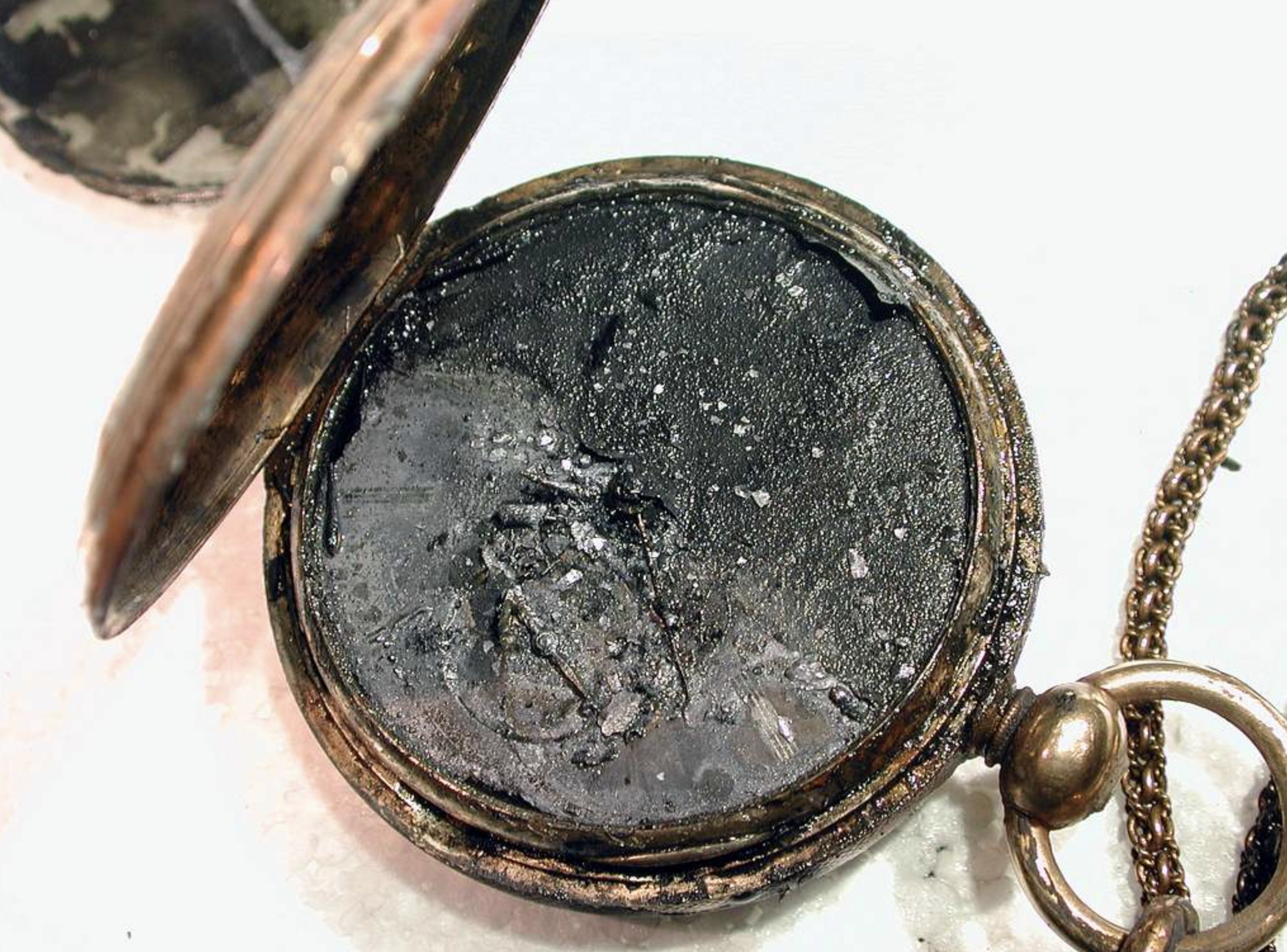
Up Close Detail of Lt. George Dixon's Pocketwatch
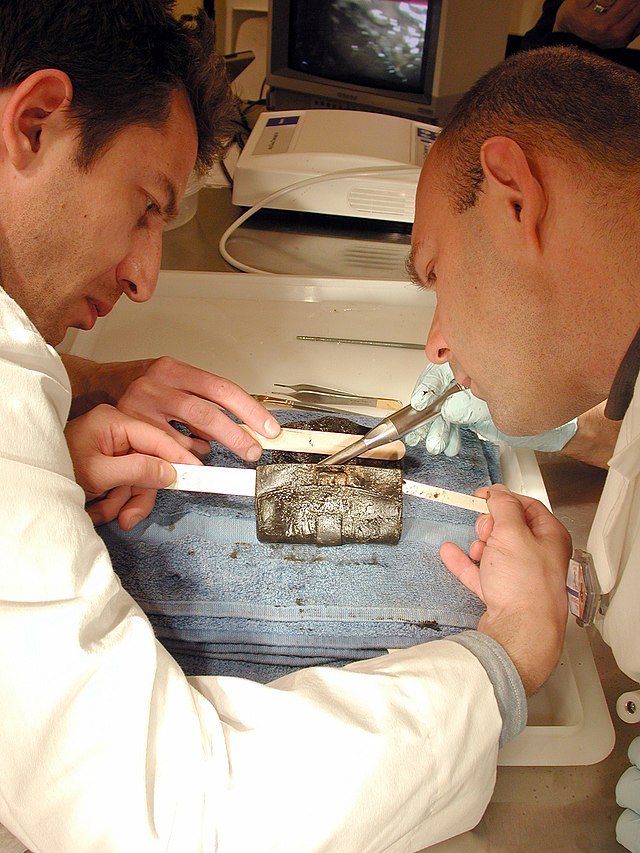
Scientists examine a Civil War-era wallet found during excavation of the Hunley

Detail image of the wallet found aboard the Hunley
A Submarine to Break the Union’s Blockade
The Hunley was ‘born’ out of necessity in response to the Union’s blockade of all major Confederate ports, preventing ships from exporting goods or delivering cargo and supplies to the South. The successful blockade was starving the South of supplies. The newly formed Confederate States of America, in its desperation, sought to break the blockade and bring in much-needed supplies.
Horace L. Hunley, James McClintock and Baxter Watson sought to find the solution to breaking the blockade by taking the battle for southern ports beneath the water’s surface with a new approach to naval warfare. In April of 1863, work began to build the Hunley at Park and Lyons Machine Shop in Mobile, Alabama. Thus, the age of submarines for military use began. James McClintock and Baxter Watson had the talent in engineering and design and Horace L. Hunley became the submarine innovator and financier. Together, the three began the process of innovation and evolution in underwater vessels.
If at First You Don't Succeed...
They were not deterred by the loss of the first two prototypes, the Pioneer and the American Diver, but used the losses to improve the concept each time. When they ran out of money, they easily found new investors to finance their next endeavor. An organization of Confederate engineers, Singer’s Secret Service Corps, were glad to fund the improved design, the Hunley. It was initially designed to dive below her target while towing a floating torpedo on a 200-foot tether. Once below the target, the torpedo would impact the hull of its target. The Hunley sunk an old barge using this method, proving this concept to be successful. The Hunley was sent by rail to Charleston, SC in the hopes of breaking the blockade that was crippling the port city.

In August 1863, the Hunley sank during a test mission and again sank during a test mission on October 15, 1863. But in spite of these “bumps in the road”, on February 17, 1864, the Hunley began her final mission that would make world history.
Sinking The USS Housatonic Warship
On the first night when there were calm seas, they launched the Hunley attack on the Union’s mightiest and newest USS Housatonic warship.
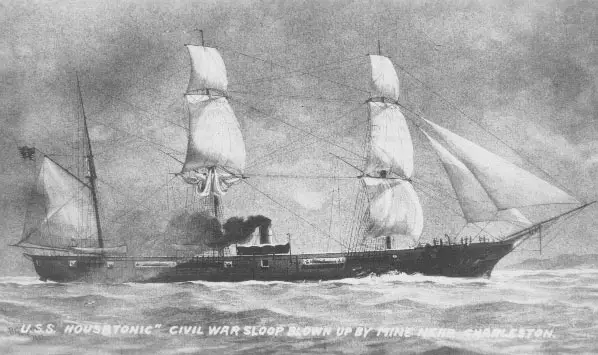
The Hunley’s spar torpedo detonated and blew a hole in the ship, which sank in less than five minutes. Although successful in its mission, the submarine and eight-man crew mysteriously vanished in the darkness of night and never returned, spending the next 136 years in a watery grave.
The Union fleet immediately dragged the area in hopes of finding the little submarine, followed by generations of explorers and adventurers hoping to discover the Hunley and her doomed crew. But it was modern technology and modern tools that finally helped locate the world’s first combat submarine in 1995.
The Cussler Crew Discovery
Best-selling author Clive Cussler, a maritime history buff, founded the National Underwater and Marine Agency (NUMA), that searches for famous, lost shipwrecks. The Cussler crew, using a magnetometer, located one of the Hunley’s two small conning towers under three feet of sediment in 30-feet of water off the coast of Sullivan’s Island before finding the Hunley laying on her starboard side with the bow pointing almost directly toward the sunken Union warship and Sullivan’s Island. It appeared she was heading home to port before disaster struck.
The Hunley Returns Home
Since the Hunley has great historical significance, the decision was made to put it on display as one of America’s great maritime artifacts. On August 8, 2000, the world’s first successful combat submarine finally returned home from a voyage that began well over a century ago. Just as the crew did in 1864 on the night they made world history, the recovery team waited for a calm sea to lift the Hunley out of its watery grave. The recovery procedure was completed with the little submarine raised safely. She was then carefully placed onto a transport barge, stabilized with tension straps and brought to the Warren Lasch Conservation Center, the lab facility specifically designed to excavate and conserve the vessel.
In the image below conservators Philippe de Vivies and Paul Mardikian are seen at work in the Warren Lash Conservation Lab. This image captured the moment where they were removing a bench in hopes tht they would discover new artifacts hidden in the submarine.
Photo courtesy of Naval Historical Center
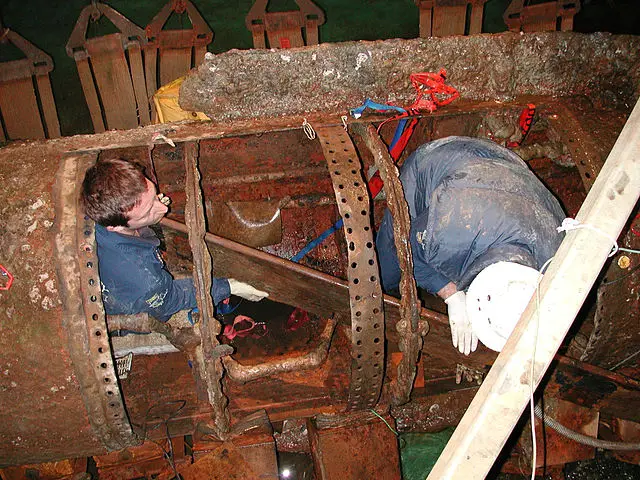
Philippe de Vivies, left, and Paul Mardikian remove the first section of the crew’s bench
http://www.navy.mil/view_image.asp?id=21600, Public domain, via Wikimedia Commons
The Hunley was then placed in a 75,000-gallon steel tank filled with chilled, fresh water to help protect and stabilize it.
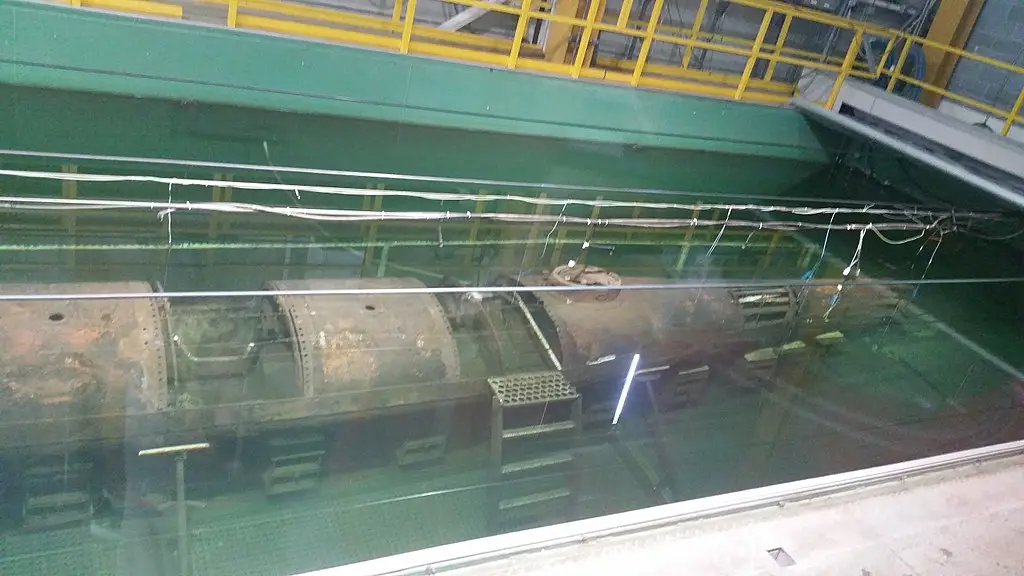
H. L. Hunley in sodium hydroxide bath
Pi3.124, CC BY-SA 4.0, via Wikimedia Commons
A Memorial Service to Honor the Crew
The remains of the entire eight-man crew were found resting peacefully at their stations. On April 17, 2004, a memorial service at White Points Garden began an elaborate ceremony to bring the crew to their final resting place at Magnolia Cemetery. Friends of the Hunley research team was able to locate descendants of two of the crewmembers who participated in the burial ceremony. Visitors came from around the world to honor the crew and witness the event including Australia, Germany, France, and Great Britain.
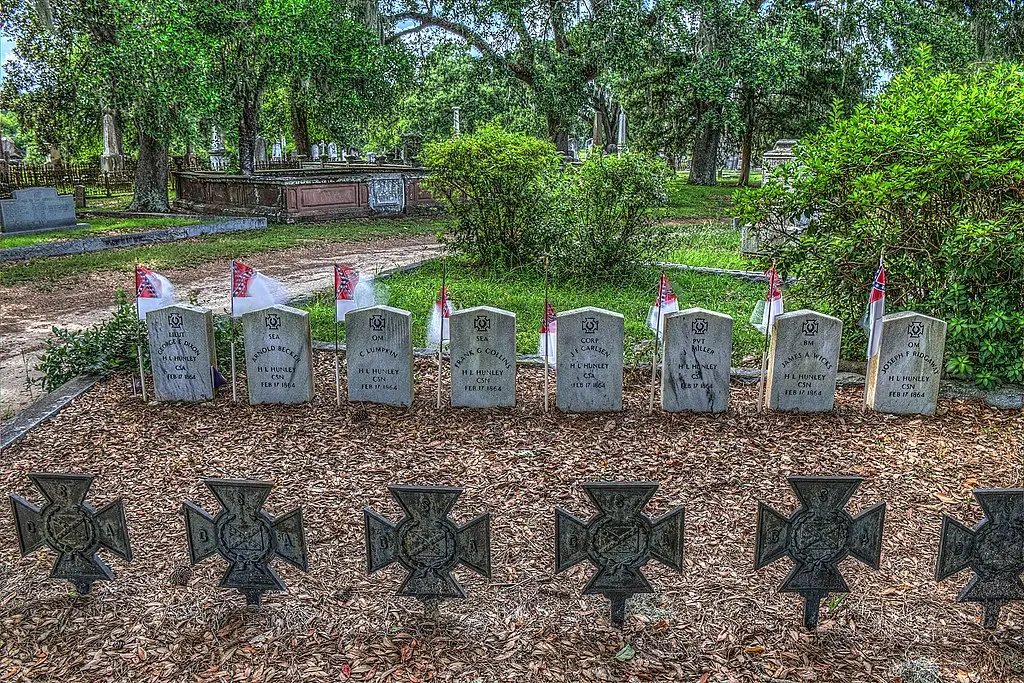
David Dugan, CC BY-SA 3.0, via Wikimedia Commons
Want to learn more about Charleston's history while relaxing on the water? Come join us on our Charleston harbor tours where we make learning fun!
